To save children’s lives, these parents aim to close a major steel plant in Italy
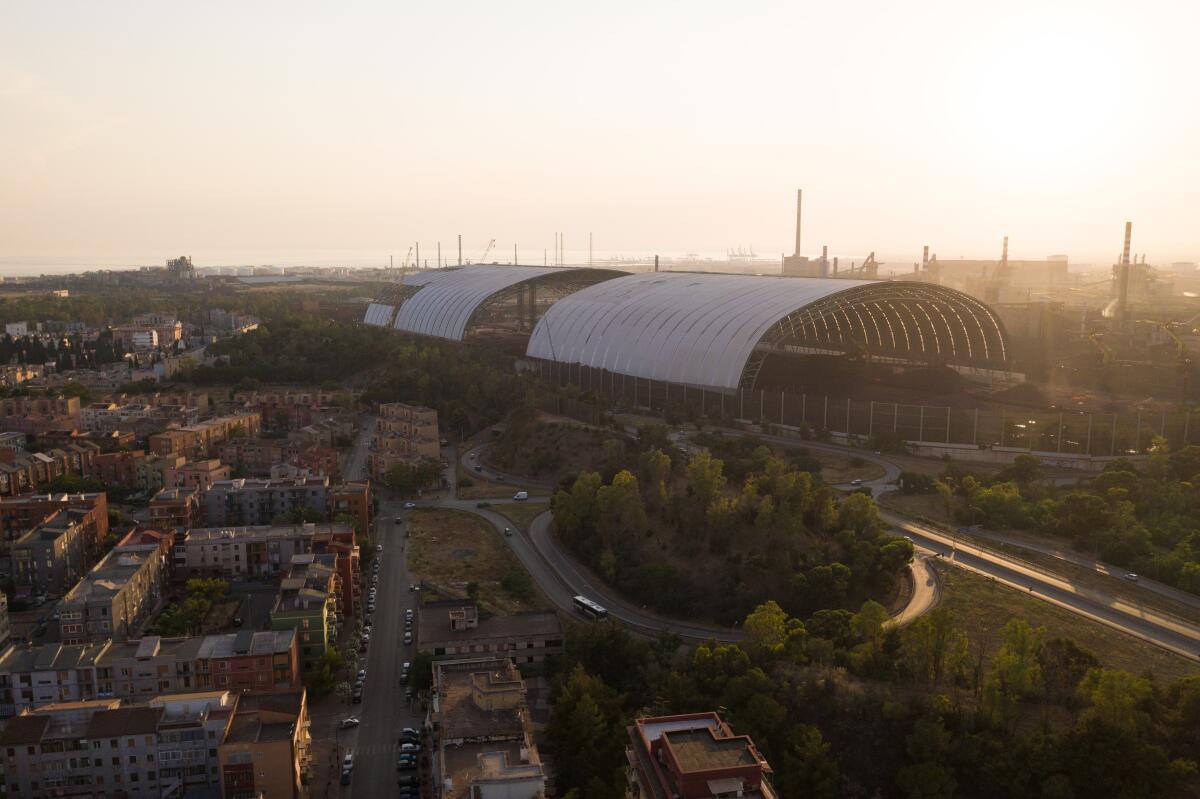
- Share via
TARANTO, Italy — Thousands of parents mourning children lost to cancer marched quietly past baroque palazzos in the Italian city of Taranto, once famous for its lush olive trees but now known for poisonous red dust.
Many carried cardboard placards featuring the images of youngsters. One poster with a picture of a 5-year-old girl read: “I was supposed to live.” They passed buildings spray-painted with the words “Toxic City.”
To these parents, who early this year formed a procession to the edge of the Ionian Sea and launched white balloons in memory of deceased children, there is one obvious culprit responsible for their grief: Ilva, the steel manufacturing plant that dominates their hometown.
“It’s a cancer factory,” said Carla Lucarelli, whose son, Giorgio, died in January of soft-tissue sarcoma shortly after his 15th birthday. Lucarelli helped organize the march.
Ilva is the largest steel plant in Europe, with dozens of furnaces blasting emissions into the air, and buildings that cover twice as much ground as housing for Taranto’s 200,000 residents. Doctors, the European Union and others say officials at the plant for six decades have flouted environmental standards, sending toxic emissions into the area that have resulted in high rates of cancer among residents.
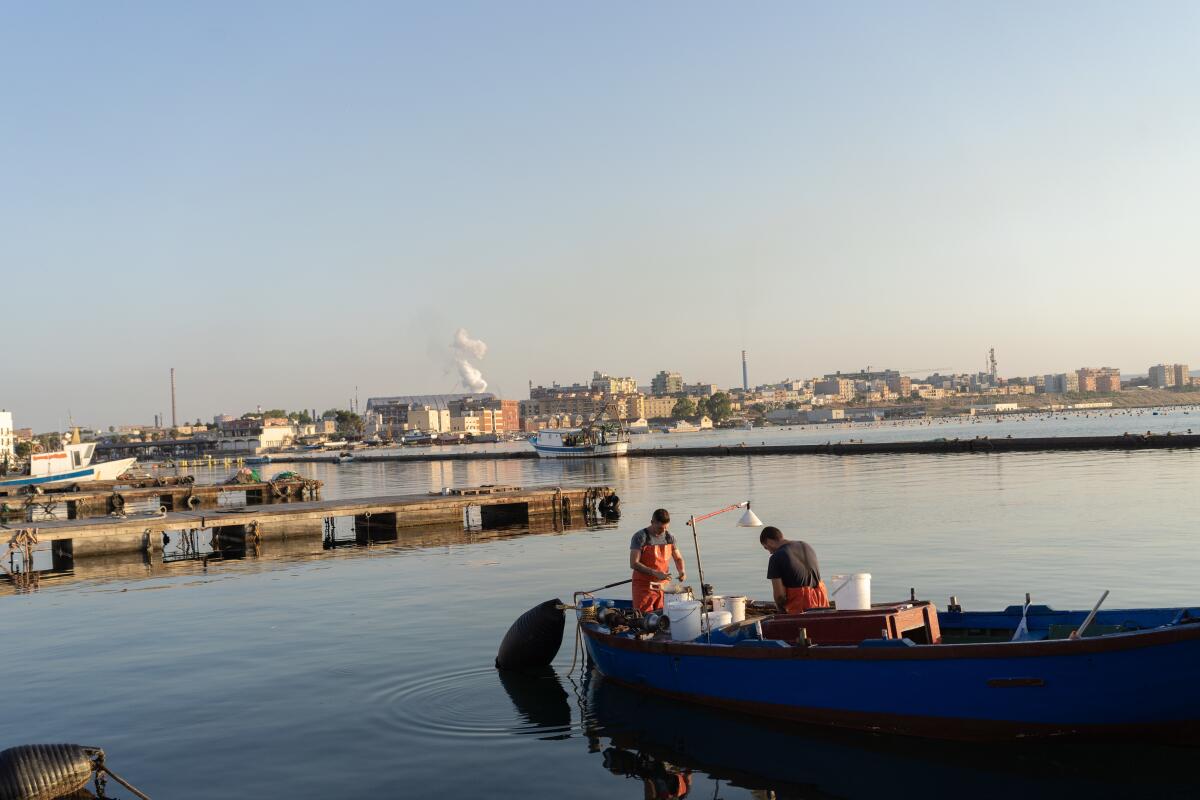
While factories across the world have polluted the environment and been tied to deaths, critics said Ilva stands out for its blatant disregard for environmental standards, its proximity to residents in the heart of the city and the national government support it has received despite local efforts to shut it down.
One of the most respected and comprehensive surveys, the SENTIERI report, found that between 2005 and 2012, more than 3,000 deaths were directly linked to, at minimum, “limited environmental exposure.”
Respiratory, renal and cardiovascular disease also exceed averages in the overall region, Apulia, and children are more likely to be born with disabilities, according to several studies.
Representatives for the Taranto mayor said they were doing everything within their power to protect citizens, including cleaning contaminated soil. Legally, the city says it does not hold the power to shut down the factory, as protesters demand.
The Ministry of Economic Development did not reply to a request for comment. For many years, the plant was owned by an Italian family or the national government.
ArcelorMittal, the company that bought Ilva last year for $2 billion, has launched a plan it says will make Ilva one of the world’s most environmentally friendly steel plants by 2023. The company’s chief engineer said the effort is expected to win over residents who remain skeptical about cleanup projects and favor closure.
Dr. Patrizio Mazza, who heads the region’s main oncology department at San G. Moscati hospital in Taranto, said that when he arrived in the city almost 30 years ago, the large number of cancer patients shocked him. The solution he’s long advocated for, he said, is to “stop doing damage to people. Close the factory. Close everything, wait for 30 years, and then we will restart again.”
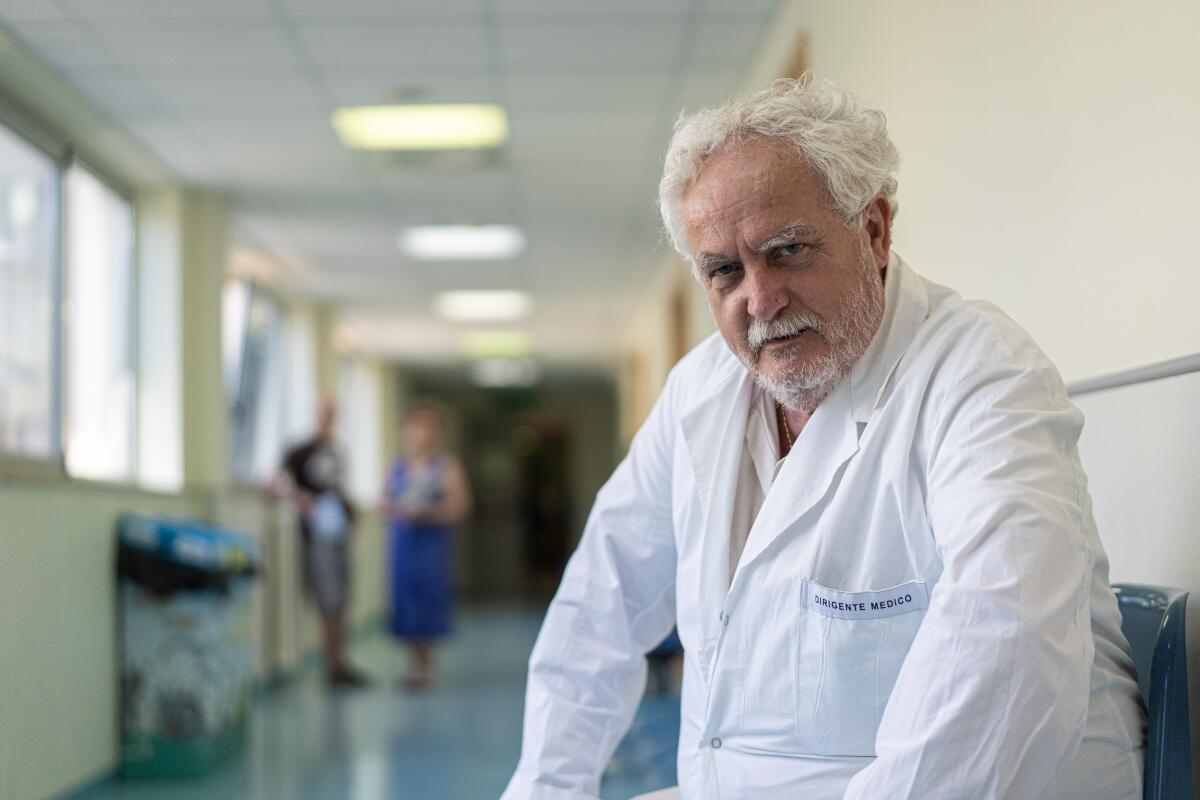
The national government’s stance through the years in effect has been that Ilva is too big to fail. Big-business lobbyists have said that the factory accounts for 2.7% of Italy’s GDP, helping Italy secure its rank as one of the wealthiest economies in the world.
When the regional prosecutor tried to close parts of the plant in 2012, citing environmental and health impacts, the decision was overruled by the national government in Rome. The more than 50,000 jobs that depend on Ilva directly and indirectly were simply too important. And losing your job, the then-health minister wisecracked, can also be detrimental to one’s health.
Maurizio Gennarini, the owner of a shipping company, said that while he favors the plant adhering to environmental standards, not having it in operation would amount to an economic nightmare.
“People need to have wages and bread on their table,” he said.
Gennarini and others pointed to the national government as most responsible for the conflict because it has failed to find a resolution.
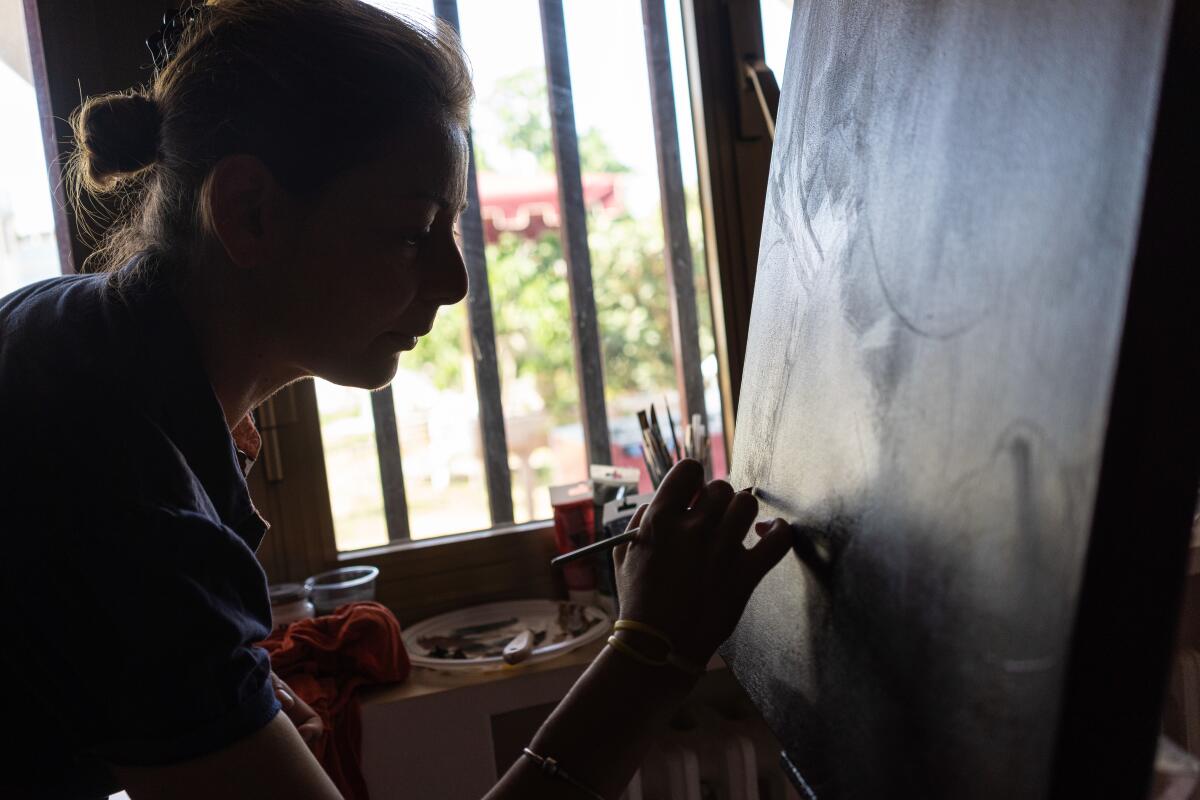
Lucarelli, a designer by training, said Ilva has become a subject in her paintings: a mother feeding her baby through a breast that morphs into a smokestack, a fetus in the womb wearing a gas mask.
She said the art is a way to channel her grief as well as to protest. As soon as Giorgio was diagnosed, she said, “we asked ourselves if this disease was somehow linked to Ilva.”
People are fed up, said Valentina Occhinegro, who wears a bright yellow wristband that reads “Justice for Taranto,” the name of her grass-roots activist group.
Occhinegro used to live in the city center, not far from where she runs an optometrist shop. A few years ago, when her now-7-year-old son was a toddler crawling around her home, she could no longer ignore the layers of red mineral dust that carpeted her floors each day. Northern winds, she said, have been carrying iron ore particles from Ilva’s open-air storage facilities across the city for as long as she can remember.
“I needed to protect my son,” she says of her decision to move and commute 30 kilometers to work instead. “It’s a huge sacrifice, but I can afford it. But what about the people who can’t?”

In 2012, not long after Occhinegro’s move, livestock was culled after it was found to have dioxin levels exceeding the legal maximum 30 times over. Even today, cows are not allowed to graze within a 20-kilometer radius around the factory. Yet 200,000 people still live in that exclusion zone, many of them blue-collar plant workers without the means to leave.
As part of the deal in which ArcelorMittal acquired Ilva, the Italian government assured the company that it would not be held responsible for any environmental or health issues related to the plant.
Parliament revoked this guarantee in June, but the move hasn’t been ratified; Italy’s new minister for economic development said in September that he was ready to give ArcelorMittal the guarantees it needed to keep operating Ilva and complete its $1.3-billion environmental plan to clean up the area. But such guarantees are the subject of fierce political debates.
In March, the municipality shuttered two schools after they were deemed unsafe. In the 1970s, the factory built two hills as supposedly natural barriers meant to shield the schools‘ 700 students from the carcinogenic dust produced by the factory, located just on the other side. But management at the time had built the hills using the factory‘s toxic waste.
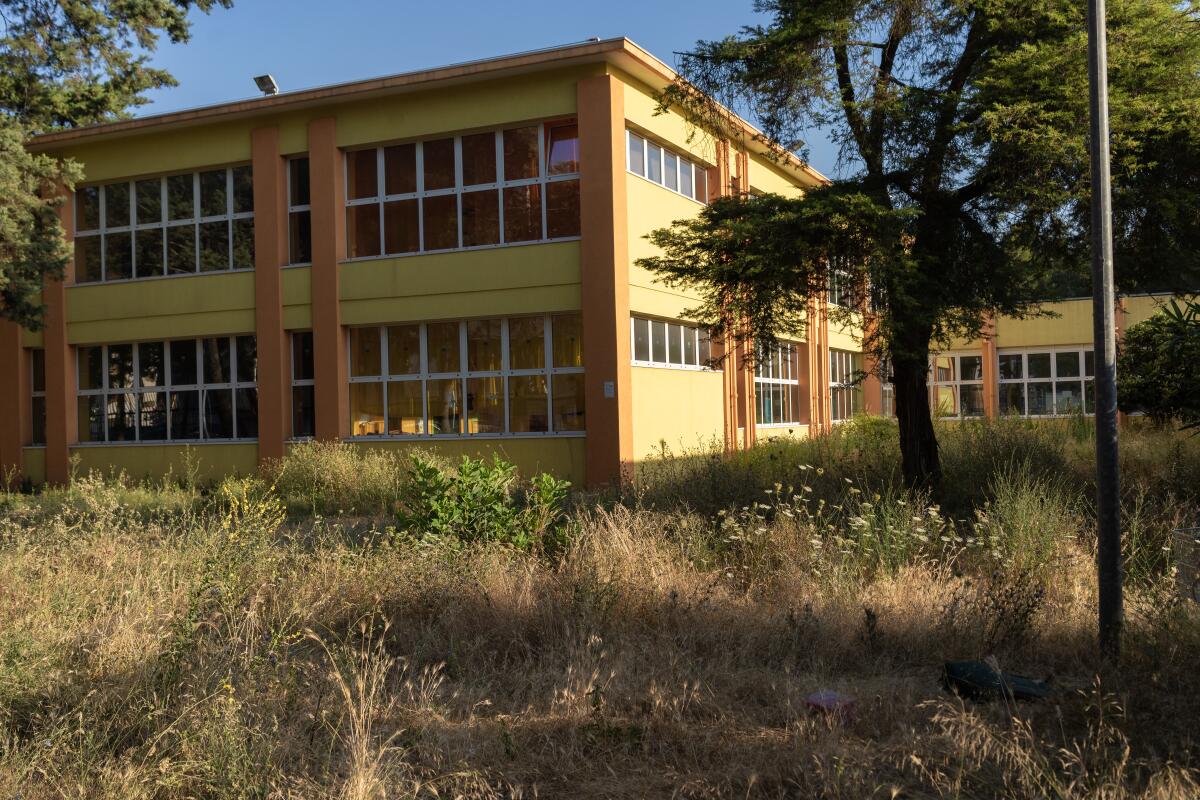
The municipality says that the hills have been cleaned, and in September the schools opened for the new year.
“The core focus for us is to decrease to zero the emission,” said Henri-Pierre Orsoni, ArcelorMittal’s chief engineer, who lives in Taranto.
While cutting emissions by upgrading sinter and coke oven stacks, the biggest visible change is expected to come in November, when a steel dome to cover Ilva’s open-air mineral storage sites will be completed, Orsoni said. The dome is set to cover an area the size of 23 soccer fields. By 2023, Orsoni said, the entire environmental plan is scheduled to be completed.
“We are sure that in implementing all that we are doing, we [will] change completely the image of the plant and the acceptance of the population,” Orsoni said.
Lucarelli and Occhinegro, however, remain adamant that the plant needs to be closed, that it is incompatible with human life, and that each day it operates means more deaths. On the streets, they continue to march in the name of those who have died, with hope that, just maybe, they might still win their fight against Ilva.
“All the steel in the world,” their posters read, “isn’t worth the life of a single child.”
Hruby is a special correspondent. Special correspondent Thomas Cristofoletti contributed to this report.

More to Read
Sign up for Essential California
The most important California stories and recommendations in your inbox every morning.
You may occasionally receive promotional content from the Los Angeles Times.












